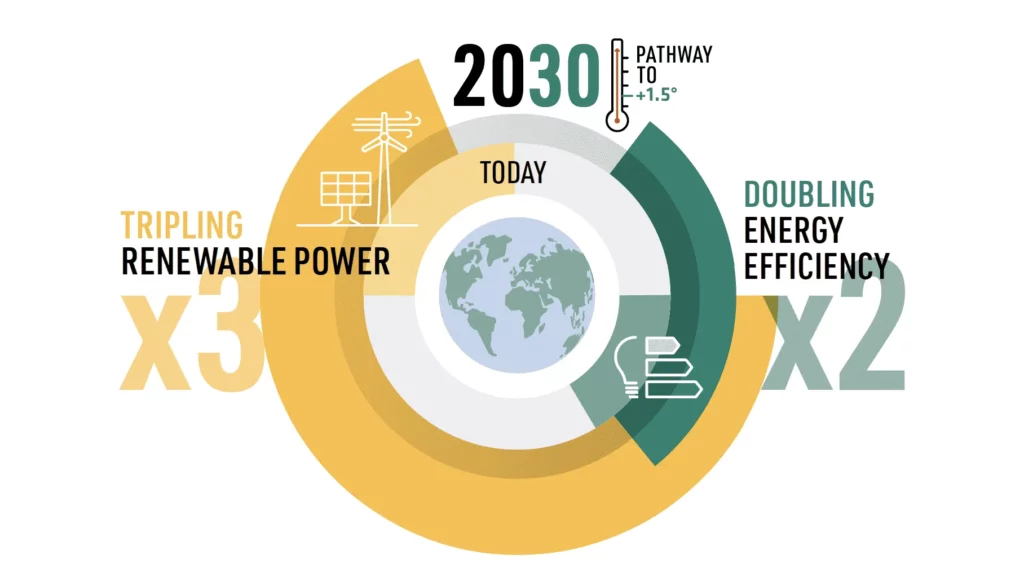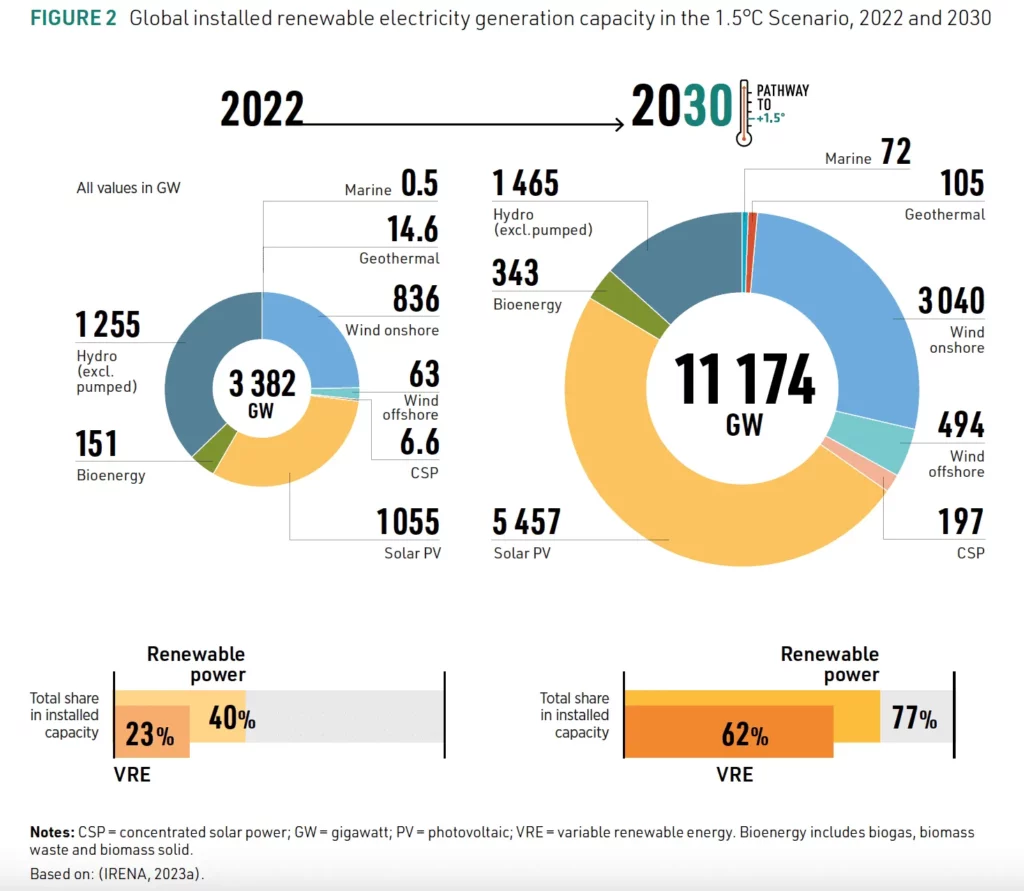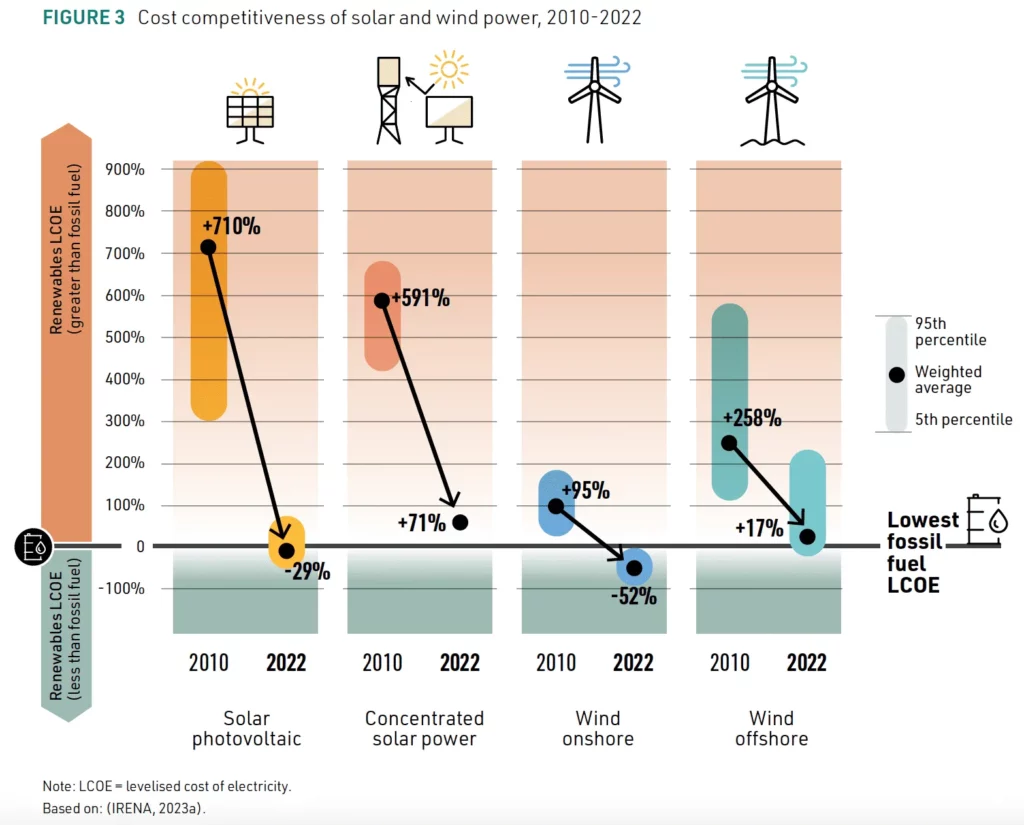To achieve the goal of not exceeding +1.5°C of global warming by 2030, the latest report from IRENA presented at COP28 states that it will be necessary to triple the production of energy through renewable sources in this decade.
A recent report from the International Renewable Energy Agency (IRENA) underscores the critical need for swift and decisive action to limit global surface temperature increase to 1.5°C above pre-industrial levels by the end of the century. The report, based on IRENA’s World Energy Transitions Outlook 2023, highlights that success in reducing greenhouse gas emissions in the current decade is pivotal to achieving this goal. The study emphasizes the necessity of a significant and rapid transformation of the energy system, with a focus on energy efficiency, electrification powered by renewables, clean hydrogen, and direct use of renewables.
Despite some progress, the deployment of energy transition technologies is deemed insufficient in terms of speed and scale to align with the Paris Agreement objectives. The report stresses the urgency for a substantial acceleration across energy supply, end-use sectors, and enabling technologies.

According to IRENA’s 1.5°C Scenario, global total installed renewable power generation capacity must more than triple by 2030, reaching 11,174 GW, with solar PV capacity exceeding 5,400 GW and wind installations surpassing 3,500 GW (3,040 GW onshore and 500 GW offshore). The share of variable renewable energy in electricity generation is projected to rise from 10% in 2021 to 46% by 2030, necessitating increased flexibility in the operation of the energy system. The report also highlights a significant growth in hydropower capacity, reaching 1,465 GW by 2030 under the IRENA 1.5°C Scenario.

In the case of solar energy, it will mean quintupling the capacity of photovoltaic solar energy generation, going from 1,005 GW in 2022 to 5,457 GW in 2030. This increase in capacity is influenced, among other factors, by the decrease in the Levelized Cost Of Electricity (LCOE) for solar energy, which is currently the second most cost-effective (after onshore wind), being 29% cheaper than the lowest fossil fuel LCOE.

Now it’s your turn. If you have a photovoltaic solar project and want to optimize energy production, contact us, and our team will take your business to the next level.
